Rural Wisconsin's population growth and its relationship with tourism
Here & Now extra: A Wisconsin Policy Forum report details how the business of recreation plays a prominent role in places that saw a growing number of residents in the 2010s — Bayfield County exemplifies how the pandemic was but a blip in this trend.
By Jane McCauley | Here & Now
July 13, 2023 • Northern Region
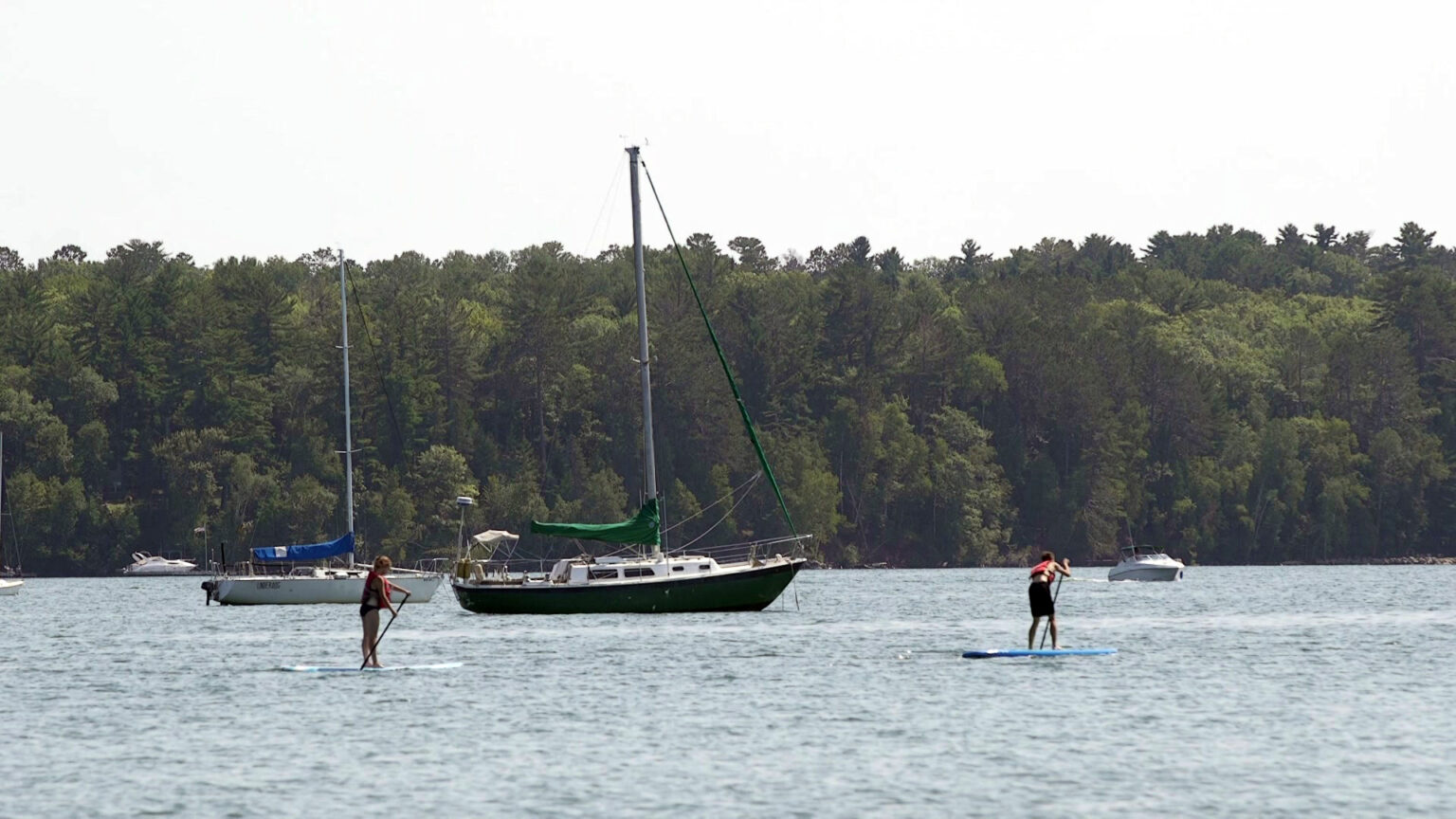
Paddleboarders make their way across the waters of Lake Superior off Madeline Island on Aug. 16, 2018. Bayfield County experienced a record-breaking tourism season in 2022 and business is booming in 2023. (Credit: PBS Wisconsin)
One of Wisconsin’s signature tourist regions, from its shores to islands to wooded uplands, Bayfield County is seeing a post-pandemic tourism boom at the same time as its population is growing. As travelers flock to its outdoor attractions, the county’s outlook reflects how rural population growth in Wisconsin is tied to recreation, particularly compared to other states in the Midwest.
Wisconsin’s population has grown slowly over the past decade, with most of the increase driven by just a few locations, including the Madison metro area and Twin Cities suburbs. However, the state’s rural population is growing as well, led by Sawyer, Vilas, Bayfield, Burnett and Door counties. One factor these counties share are tourism economies, according to a June 2023 report from the Wisconsin Policy Forum.
Mark Sommerhauser, the report’s author, described Wisconsin’s rural population growth as “modest and has slowed over time.” But he described the growth many rural counties experienced in the 2010s as a comparatively positive trend.
“Population trends in Wisconsin are a glass half full, glass half empty type of scenario. We had our report in more of a half full sense,” Sommerhauser said. “If you compare rural places in Wisconsin overall to our neighboring states, we’re doing better than most.”
The primary group of people moving to these counties consists of retirees and people in the 55-to-70 age range who have the time and money to indulge in a lot of tourism. Yet, Sommerhauser also noted that there are also people in the 30-to-54 year-old age group – a prime working demographic — moving to these counties.
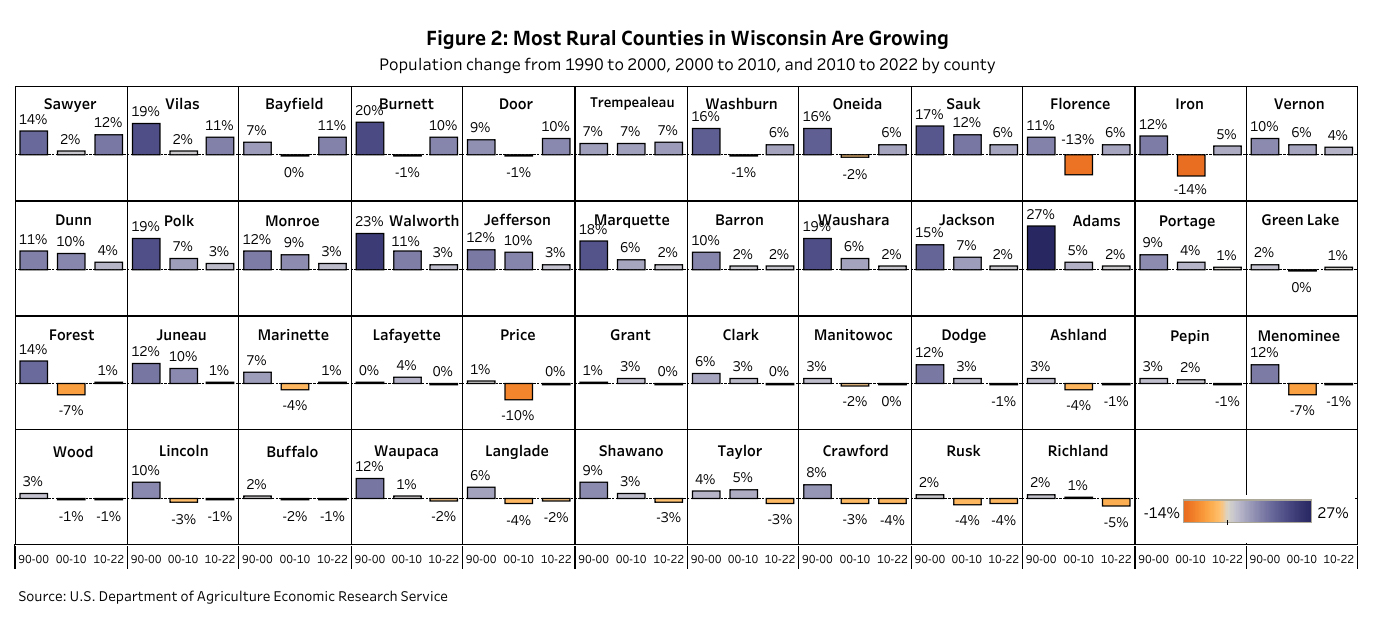
A data visualization shows population change from 1990 to 2000, 2000 to 2010, and 2010 to 2022 among Wisconsin counties defined as rural. The five counties with the highest level of population growth from 2010 to 2022 — Sawyer, Vilas, Bayfield, Burnett and Door — are each tourism destinations across the northern portion of the state. (Credit: Courtesy of Wisconsin Policy Forum)
In 2022, the economic impact of tourism spending in the state hit a new peak, according to a May 2023 report issued by the Wisconsin Department of Tourism. Tourism provided more than $23 billion to the state’s economy in 2022 and employed more than 170,000 people, according to the agency’s Secretary Anne Sayers.
As the 2023 summer travel season proceeds, Bayfield County is already experiencing the benefits from another surge in visitors.
Kati Anderson, public relations manager for the Bayfield Chamber & Visitors Bureau, described the ongoing growth of the county’s most visible industry in a July 7, 2023 interview on Here & Now. Anderson compared the summer 2023 season after the record-breaking season the previous year, and describes the actions the group is taking as they expect numbers to continue growing in future years.
With more people moving to the area, communities like Bayfield are struggling with having sufficient housing to keep up with the demand of a growing population.
“There’s not a lot of options here in Bayfield County for housing, but those are some initiatives that we are hoping to partner with some local other entities to try to help spur that,” Anderson said.
While employers and workers in the community consider how to best tackle this concern, the COVID-19 pandemic may have accelerated tourism in this rural area.
“Bayfield really saw a lot of people come here in 2020 to get away from the city activities, so we’re still seeing that momentum,” Anderson said.
In the meantime, rural counties continue to assess population growth and tackle their busiest months of the year at the height of the tourism season.
“One in 21 jobs in the state are connected to tourism in some way,” Sayers said. “So it’s really important that we do this work of making sure folks understand that Wisconsin is a great place to make memories and that those opportunities exist in every corner of the state.”
 Passport
Passport






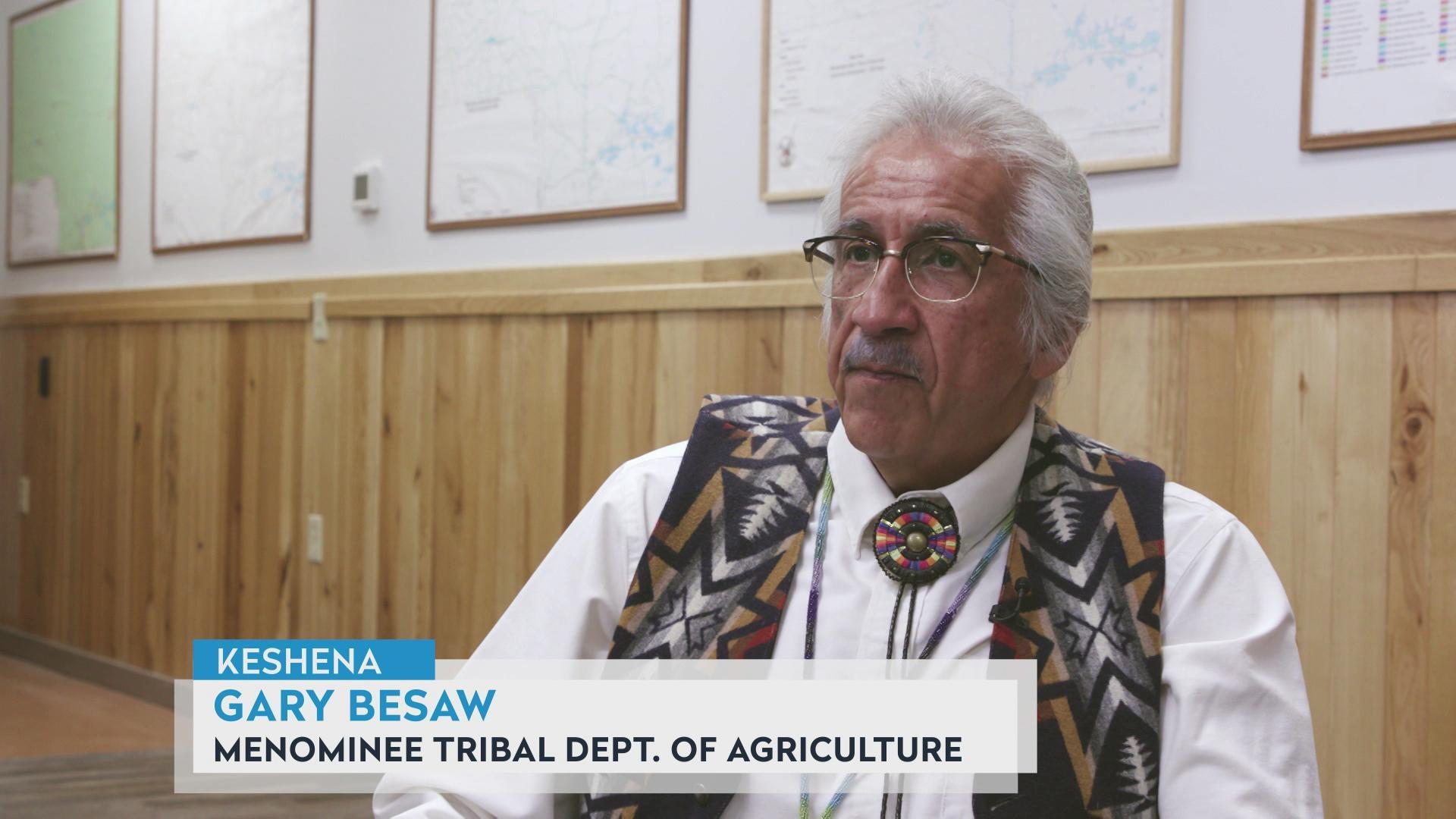
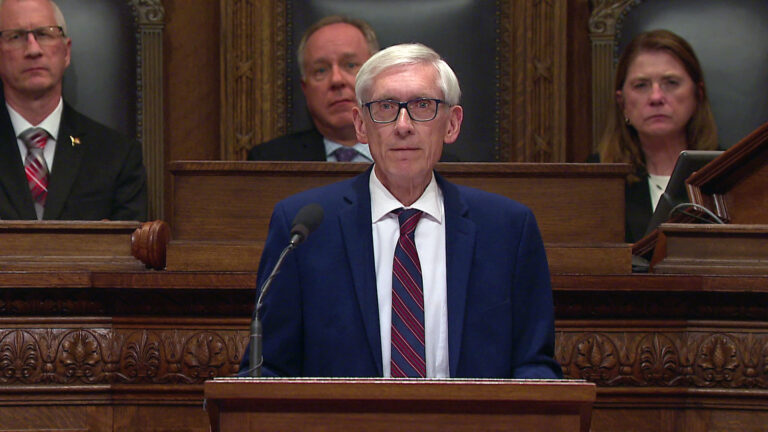
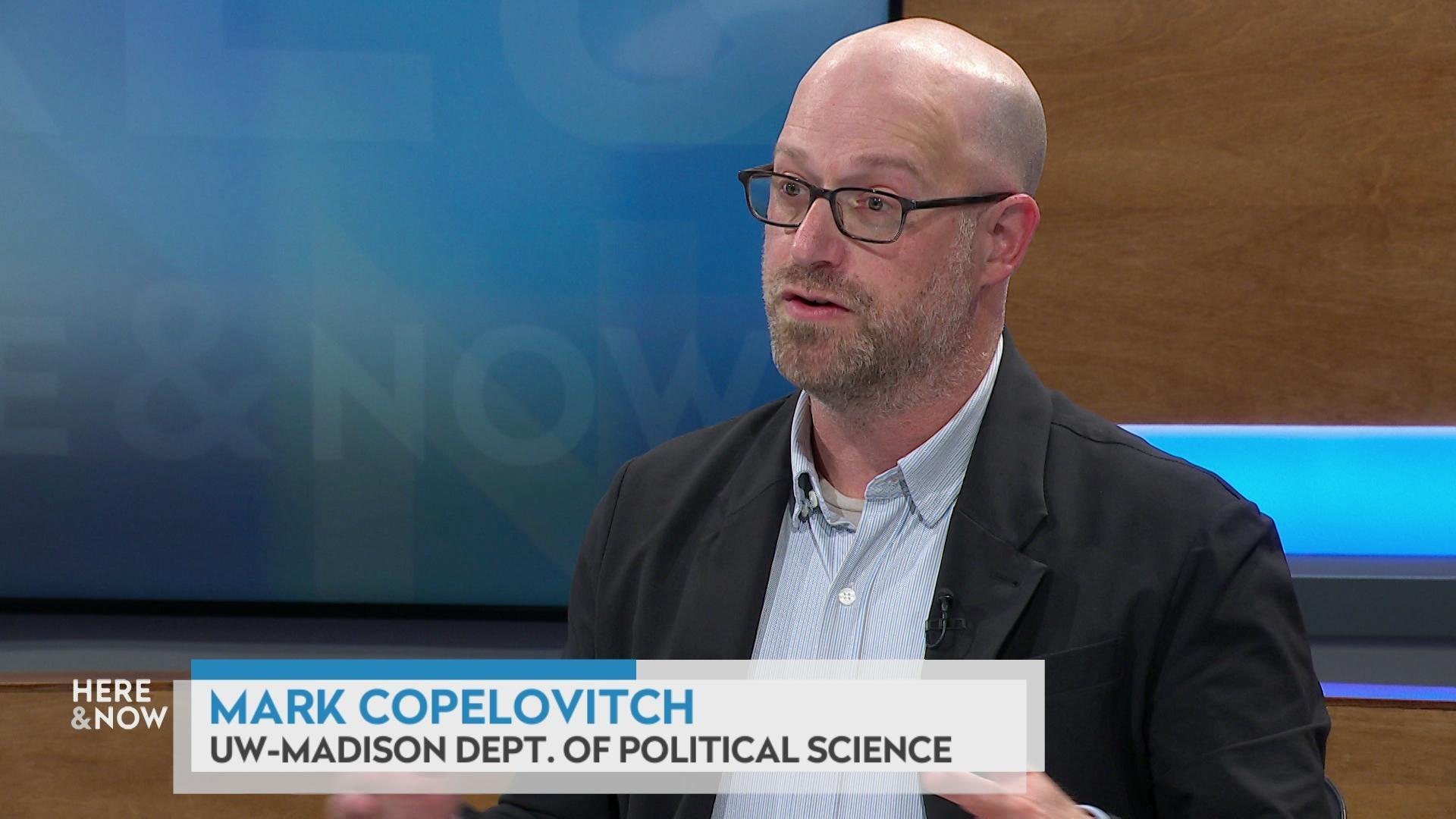
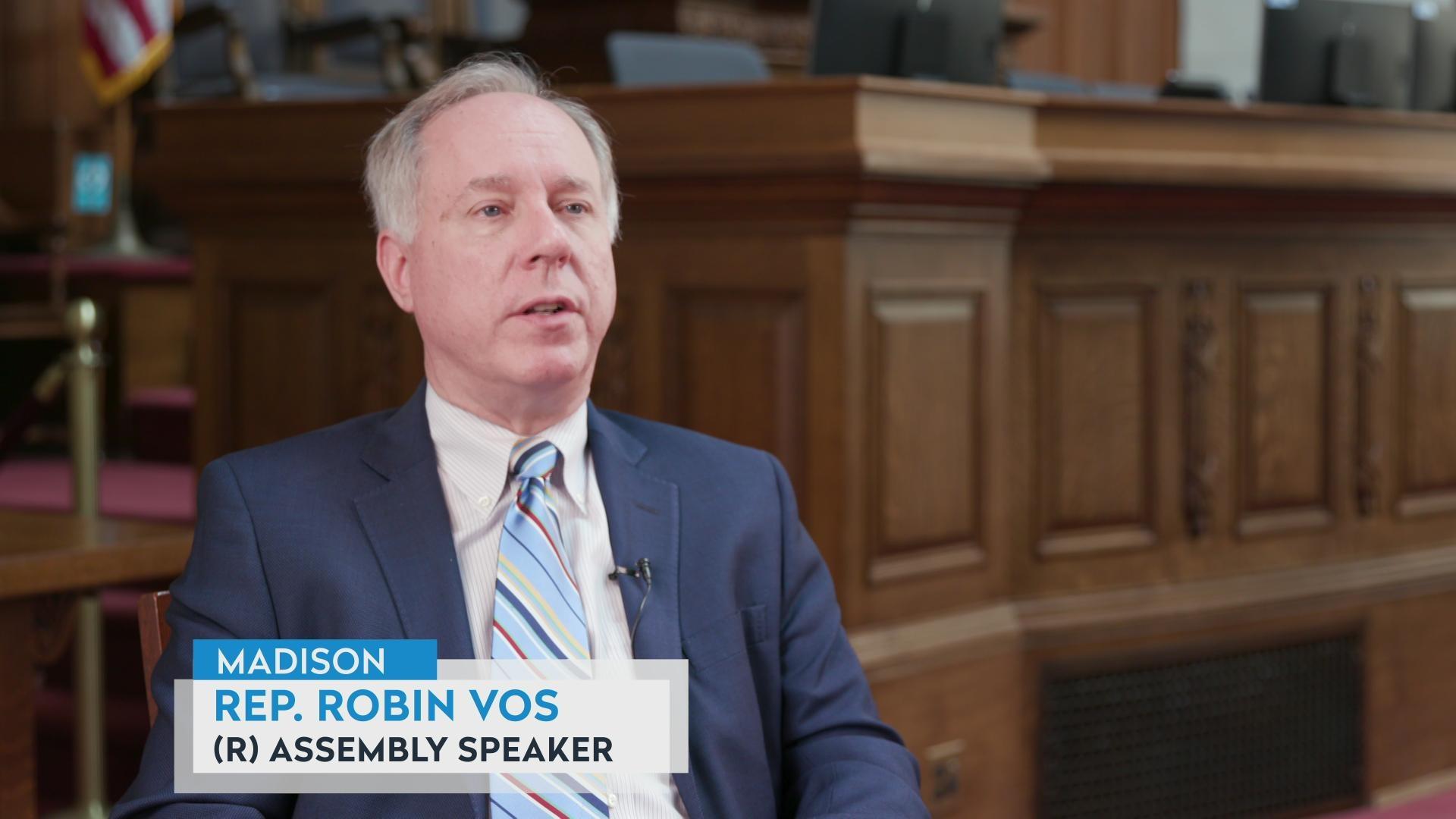

Follow Us